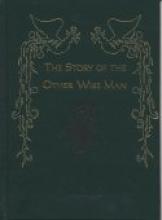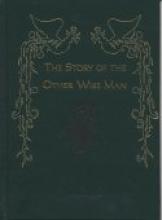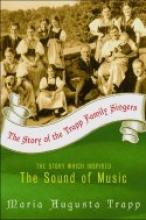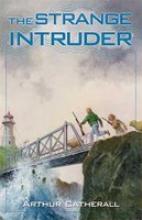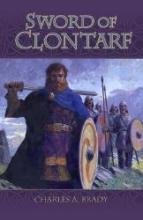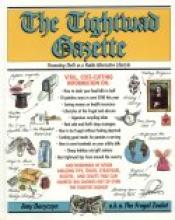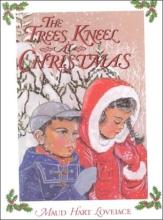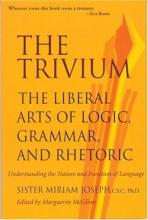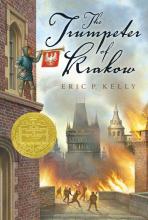No name
The Story of the Other Wise Man
The Story of the Other Wise Man
The Story of the Trapp Family Singers
I found this a really delightful and engaging book. Maria, who in not a professional writer and is writing in her second language, comes across with a style that is a little unusual, but very charming and personable. In many little details, the movie is surprisingly faithful to the book, but in other ways, it actually understates rather than exaggerates some of the amazing aspects of the story. This book also goes well beyond the scope of the movie, even when looked at chronologically. There are many reasons to recommend the book, but my favorite aspect of the book is how Maria comments and reflects (in a very Catholic way, may I add) upon the events surrounding her and her family - the providence of God in many parts of their lives, the importance of music in culture, her thoughts on the discipline of children, some of the terrible events and persons of Europe during World War II, and on and on. Although I was reading the book to myself (and there are many reflections of interest to Catholic mothers), there were many, many little fascinating and humorous stories within the story that I had to share with my husband and children.
The Strange Intruder
Originally published in Great Britain under the title The Strange Invader
The Sword of Clontarf
The Tightwad Gazzette
This book is available in either three individual volumes or a newer paperback compilation. The books are collections of individual Tightwad Gazzettes, a newsletter filled with thoughts and ideas about saving money, getting out of debt, living on one income, etc. Some of the ideas seem a little extreme, but Mrs. Daczycyn explains that she has had people in very desperate situations call her for advice. She feels that it's worthwhile to include all of these ideas as they may be helpful to some. Most of the ideas, however, are very creative way of stretching a dollar and will be helpful to many. Also, the ideas are indexed so that you can easily go back to the recipe for homemade playdough or her statistics on the money/time saving comparisons of owning a dishwasher or washing by hand. She does have ethical lines she won't cross just for the sake of saving money, but most homeschoolers won't agree with EVERYTHING she says - she feels that public schools and network television are GREAT deals. You may be surprised to discover that the books are rather engaging. One of my sisters-in-law even described them as "addictive."
The Trees Kneel At Christmas
Maud Hart Lovelace is famous for her Betsy-Tacy series of chapter books. The Trees Kneel At Christmas is a delightful story of two Lebanese-American children in 1951 Brooklyn. Their grandmother tells them how the trees kneel on Christmas in their homeland of Lebanon, but in their new home of Brooklyn the people do not have enough faith for the trees to kneel.
However, the children do have faith and they set out to prove that the trees do in fact kneel down in honor of our Lord's birth in Brooklyn. When the adults leave for Midnight Mass, the children sneak away to the park so that they can witness the trees at midnight.
This is a story about having the faith of a child, the kind of faith that Jesus calls us all to hold.
The Trivium: the Liberal Arts of Logic, Grammar, and Rhetoric
This little gem was used as a freshman college course after the author met philosopher Mortimer Adler and understood the importance of teaching basic language skills as the foundation of other learning. After some years of study, she put together this course in the Trivium, the three language arts – of word relations (grammar), concept relations (logic), and composition (rhetoric). The result is a primer in Aristotle's Categories, a demanding course in logic, and a prerequisite to good composition. It is not, mind you, a course in grammar conceived as the study of commas, periods, and subjunctive verbs, though it might lead to insight into these matters. Not is it a course in "symbolic logic", the modern logic stripped of thought and studied simply as a form of mathematics. Rather, Sister Miriam offers a prerequisite to philosophy and writing, for this is a course in clear thought and the right use of language.
With all this, The Trivium is demanding, yet it is very accessible. Despite its original use as a freshman college course, it reminded me very strongly of my high school logic text, which, like this, was the work of an obscure nun who had studied Aristotle and wanted his clarity to form the minds entrusted to her care. I look forward to the opportunity to use it at the high school level.
Not only is the volume accessible, but one must delight in its literacy. The illustrations are taken from the great literature of western culture – so the mind is always lifted. It is a pleasure to read, and study is always rewarding, because every step sparkles with beauty and interest as well as clarity. Many of Sister Miriam's examples were originally taken from great literature; her loving editor Marguerite McGlinn has taken the liberty of replacing those illustrations which were time-bound with even more good literature so as to move the book into its rightful place as a timeless resource.
For those who know and love Dorothy Sayers' little essay on the trivium, it may be appropriate to warn that this is not in any sense a resource for primary or middle school children.
The Trumpeter of Krakow
The Trumpeter of Krakow is set in fifteenth century Poland. The main characters are Pan Andrew, a Ukranian farmer, his son Joseph, and Elzibieka, the niece of a neighboring alchemist. Joseph and his parents flee to Krakow after their home and fields are mysteriously burnt. Joseph thought that they had left all their troubles behind them, but a villain named Button Peter continues to pursue them, trying to get something of great value from them. When they reach Krakow, Joseph's father surreptitiously changes their names, leaving behind all traces of their past.
The story focuses on two Polish legends: the story of a young trumpeter in the church of Our Lady Mary, who keeps his oath as trumpeter, even to the death. The second is the Great Tarnov Crystal – reputed to be a thing of great beauty and power. Joseph Charnetski and his family are bound by an ancient oath to protect this famous jewel from any who would try to take it.
The Trumpeter of Krakow was first published in 1928. The book has several villains and many twists and turns in the plot. It is fast-paced and exciting. My brothers and I give it a nine out of ten rating. We all enjoyed the style of writing and found the plot adventurous. I would recommend this for grade six and up or a great family read aloud.
Reprinted many times.

